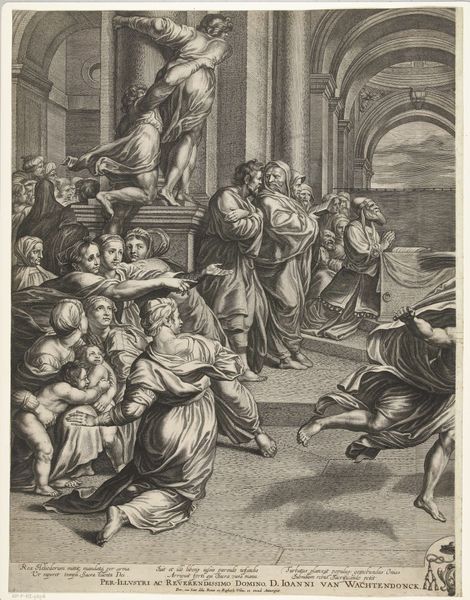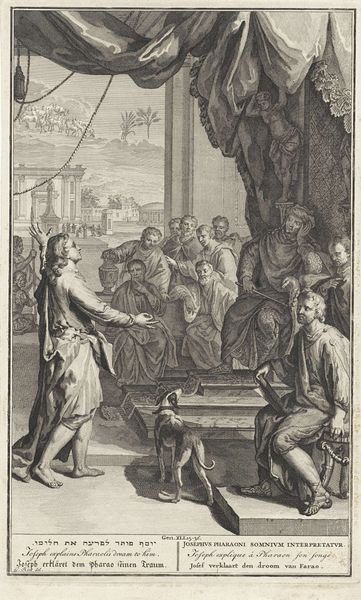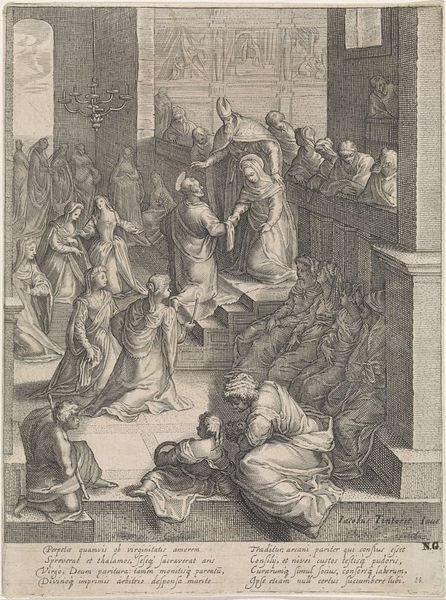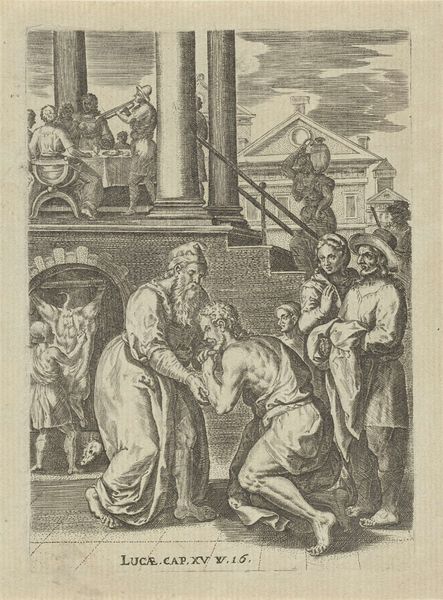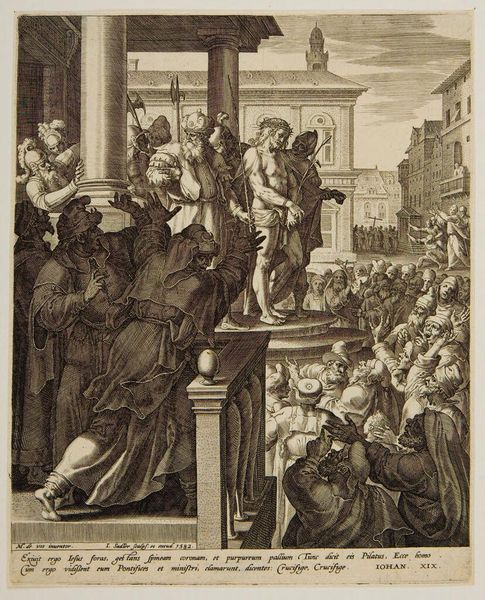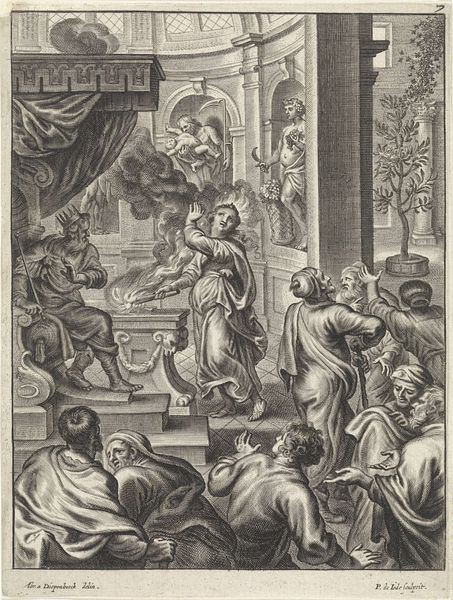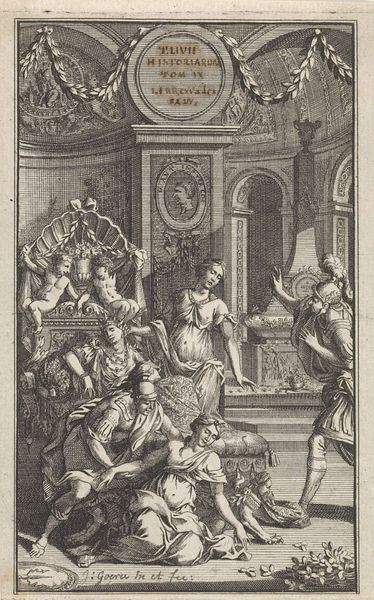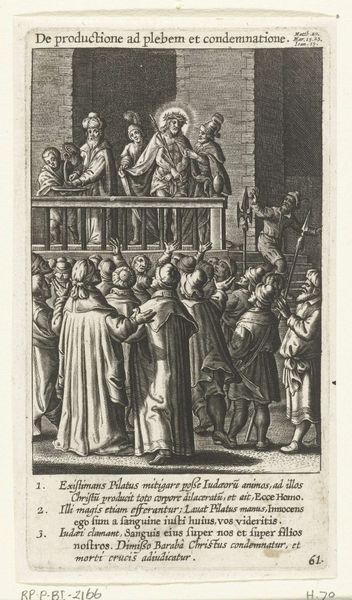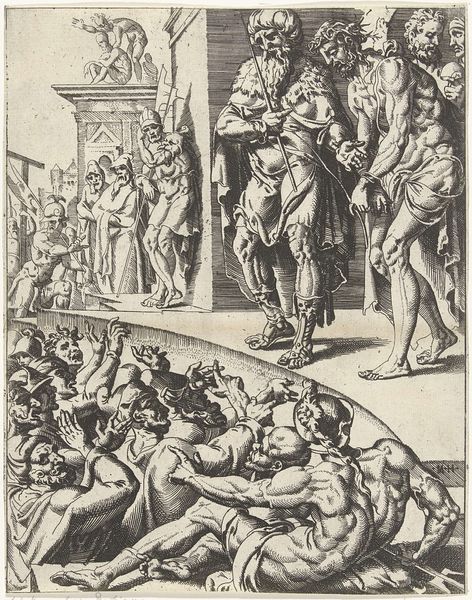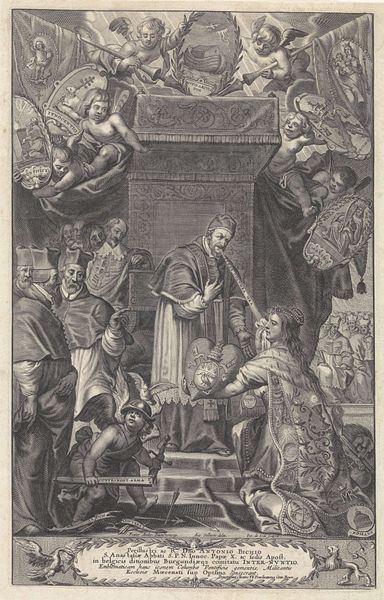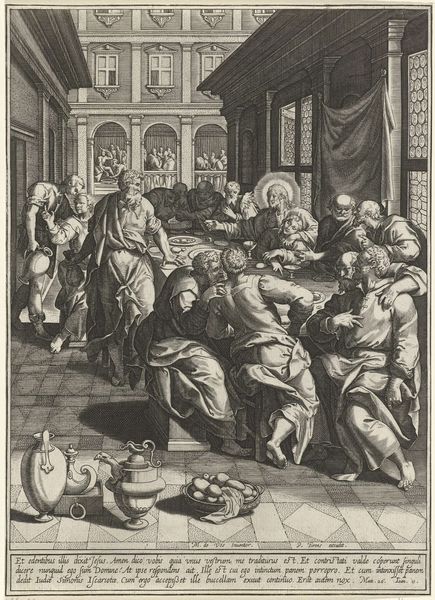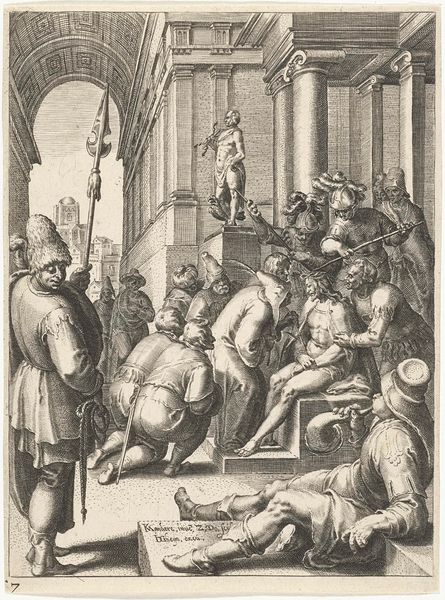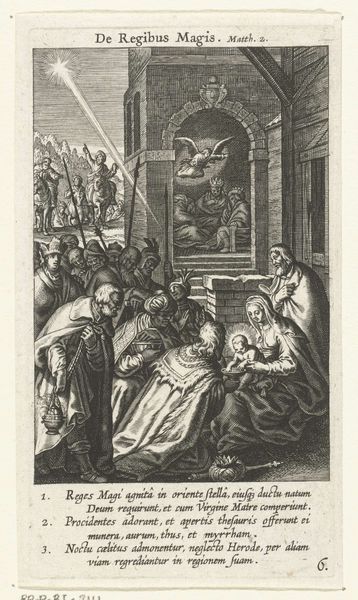
print, engraving
#
narrative-art
#
baroque
# print
#
pen illustration
#
old engraving style
#
figuration
#
linework heavy
#
pen-ink sketch
#
pen work
#
history-painting
#
engraving
Dimensions: height 280 mm, width 203 mm
Copyright: Rijks Museum: Open Domain
Editor: This is "Ecce Homo," a print made sometime between 1590 and 1638 by an anonymous artist, housed at the Rijksmuseum. I'm struck by the density of the composition. The artist has packed so many figures into the scene, and the linework is incredibly detailed, creating a very dramatic and chaotic atmosphere. What elements of this engraving do you find most compelling? Curator: I observe the composition first as a balance between dark and light, the strategic placement of figures creating an almost theatrical arrangement. Note how the columns frame the central scene, emphasizing Christ’s isolation. The textures, achieved through varying line densities, generate both depth and emotional intensity. What does the formal structure suggest to you? Editor: I think the columns sort of 'box' Jesus in and bring my eyes right to the center. I noticed that the figures seem almost grotesque in their expressions, really highlighting the contrast between their reaction and Jesus's calm demeanor. Curator: Precisely. Observe the distribution of light and shadow; see how the engraver modulates tone through hatching and cross-hatching. This technique not only models the forms but also amplifies the emotional tenor of the piece. Note too how the gaze of most of the figures direct to the elevated platform, forcing a confrontation with the viewer. Are there lines or directions that may reveal a message? Editor: Definitely, now that you mention it, it feels very purposeful, like there's a conversation between different visual cues leading you to understanding the figure is presenting and how people react. I didn't notice that focus at first. Thank you! Curator: Indeed, by analyzing the formal elements, we gain insight into the work’s thematic concerns, appreciating not only its historical significance but also its enduring artistic merit.
Comments
No comments
Be the first to comment and join the conversation on the ultimate creative platform.
